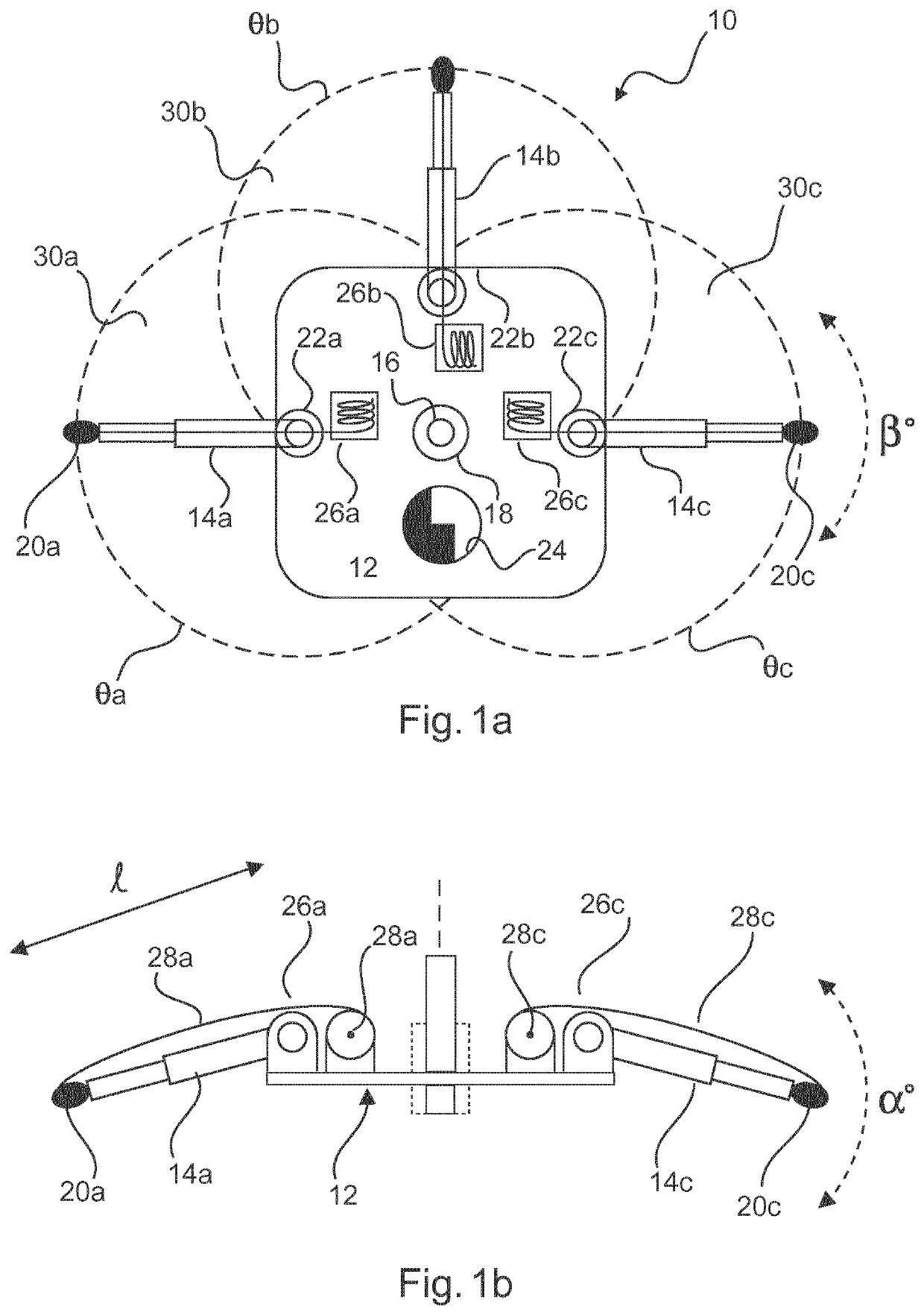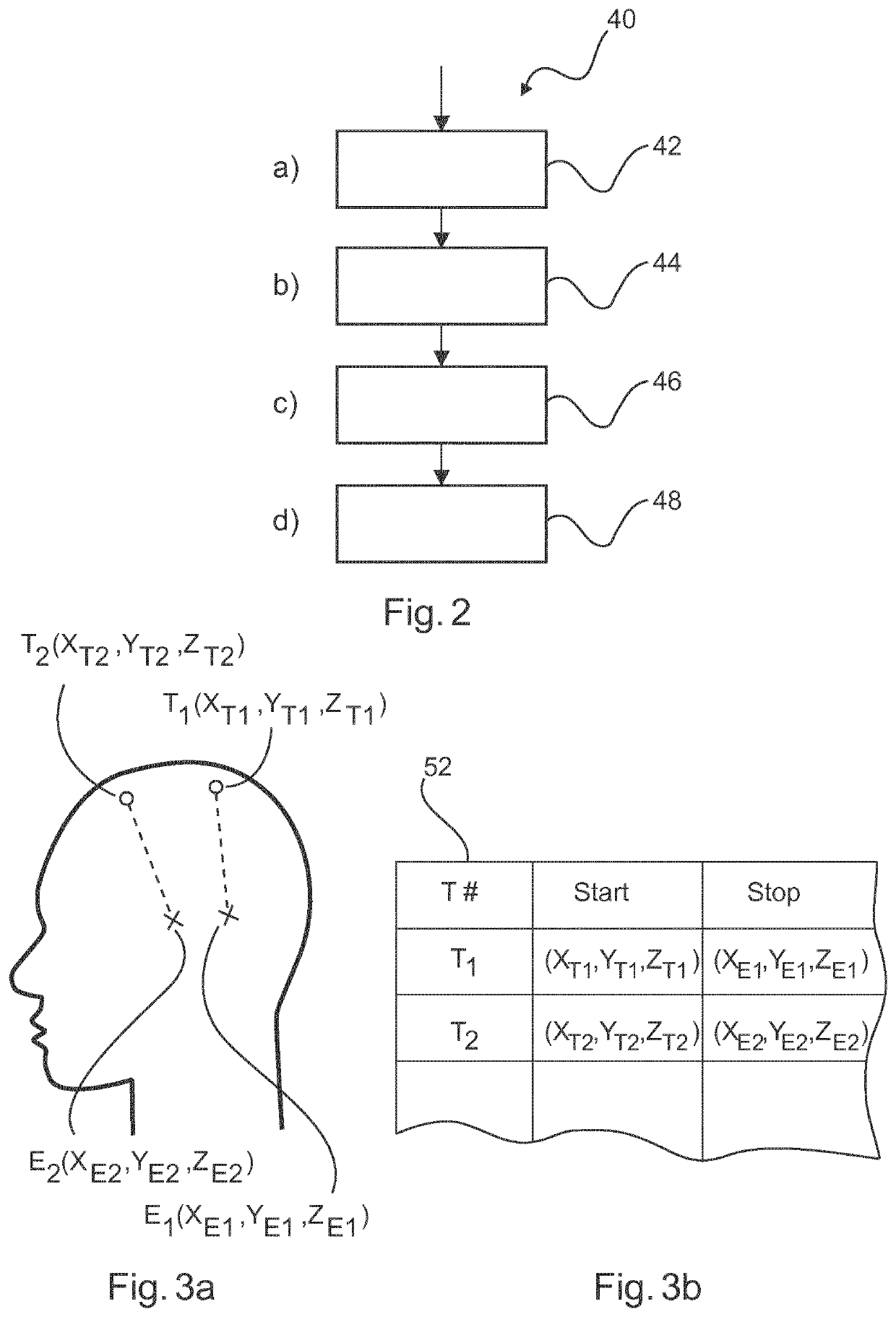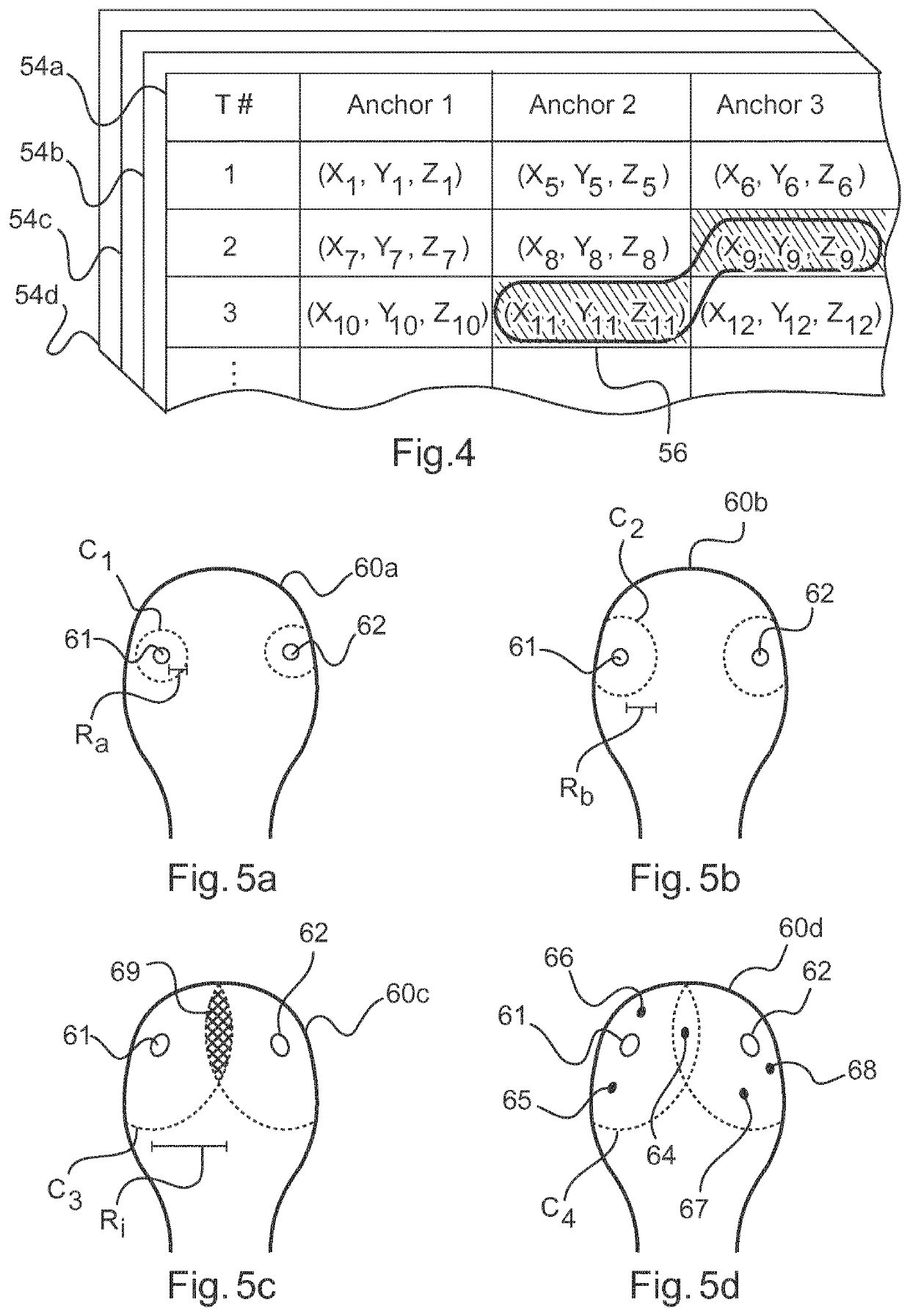Planning of surgical anchor placement location data
a technology for positioning location and surgical anchors, applied in stereotaxic surgery instruments, sensors, diagnostics, etc., can solve the problems of exhaustive search and take too long to complete unaided, and achieve the effect of reducing the number of surgical anchor members
- Summary
- Abstract
- Description
- Claims
- Application Information
AI Technical Summary
Benefits of technology
Problems solved by technology
Method used
Image
Examples
Embodiment Construction
[0167]Intra-cranial interventions often involve the insertion of a needle or other surgical implement into the cranial cavity (and through the brain tissue) along trajectories that have been pre-planned. To support the movement of the needle into the cranium, a surgical tool support is physically secured to the cranium at surgical anchor attachment points that are drilled into the surface of the skull. The needle can then be accurately advanced along its pre-planned trajectory to perform a medical operation. However, cranial interventions such as for deep brain stimulation (DBS) or stereo-electroencephalography (sEEG) do not require one trajectory, but a plurality, and often ten or more.
[0168]Providing surgical anchor attachment points is inherently invasive. Some surgical tool supports require three or four surgical anchor attachment points per trajectory entry location. Using such supports with an sEEG intervention having fourteen trajectories would imply the drilling of at least ...
PUM
 Login to view more
Login to view more Abstract
Description
Claims
Application Information
 Login to view more
Login to view more - R&D Engineer
- R&D Manager
- IP Professional
- Industry Leading Data Capabilities
- Powerful AI technology
- Patent DNA Extraction
Browse by: Latest US Patents, China's latest patents, Technical Efficacy Thesaurus, Application Domain, Technology Topic.
© 2024 PatSnap. All rights reserved.Legal|Privacy policy|Modern Slavery Act Transparency Statement|Sitemap



